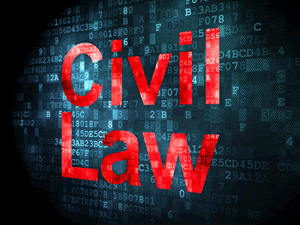Liebeck v. McDonalds Restaurants 1994
The McDonald's Coffee Lawsuit - Libeck v. McDonald's Restaurants
The Stella Liebeck v. McDonald's Restaurants case was back in 1994, and to this day there are many differrent versions of this case that circulate amongst the general public. This is the original coffee product liability case, and has become one of the most talked about lawsuits in American history. Public opinion seems to have set the bar for the belief and has obscured the clear facts of the case, everything from late night television jokes to the internet commentators spinning tales and sharing opinion, ultimately confusing the actual validity of the details that authentically took place. At that time, and to this day, the concept of a fast food drive-thru customer spilling coffee on herself, in her own vehicle, while being negligent in her handling of the product, and then later being awarded a punitive verdict of $2.7 million dollars has been simply too much for most in the general public to absorb and digest.
In recent years the trial lawyers attempted to rehabilitate the reputation of the case, initially because they were placed on the defense by the primary public opinon sway (albeit mostly unfounded and without measure of the authentic truth), and the publicity by which this case garnered such a wide and national draw. Lawyers sought to use the severity of Ms. Liebeck's physical injuries as evidence of the lawsuit's purported validation. Then, two years ago, a trial lawyer who became a filmmaker released an editorial documentary using the Liebeck v. McDonald's Restaurant case, along with many others, as examples of the many flaws that affect the public court of opinion through the filter of the lack of facts and evidence and based on opinion only. To a small measure of degree, the documentary combined wtih the editorial coverage, the public thought process has slowly begun to change towards a more realistic approach to this case. One of the facts disclosed within the documentary, is that McDonald's had a current policy of serving coffee at 180 degrees, in excess to 190 degrees. If you were to spill that liquid, it could result in second and third degree burns, just like those Ms. Liebeck suffered from more than two decades ago. Unfortunately, it is impossible to not have reasonable doubt when reviewing the case facts, and note that it was questionable at best while frivolous at worst.
Let's take a moment and review some of the facts within the Liebeck v. McDonald's Restaurant case:
- Ms. Liebeck took into her possession hot coffee, in a notable "hot" temperature, and upon placing the coffee cup between her knees coffee spilt after she removed the lid to add cream and sugar. The actions taken by Ms. Liebeck confirm in themselves her own neglegance and therefore make her partially responsible for the burns she recieved. Any arguments made on the behalf of Ms. Liebeck in refrence to her clothing, vehicle, or consuming the hot coffee have little assistance in any protection other then to cause more liability on her part. There was clarification that she was not in fact driving while consuming the hot coffee.
- The argument was made that the coffee cup and lid were defective, thus carrying a substantial part to blame in the result of Ms. Liebeck being severely burned. Also noted, that the coffee cup held a misrepresneted warning of its contents being hot, or that caution should be used when consuming the content. As the jury found McDonald's to be insufficiently concerned (even in the tone of mockery and adding the suggestion of being on "Oprah"), they awarded Ms.Liebeck a handsome financial sum and agreed with the plaintiff. They agreed with her on her claims of product defect, breach of implied warranty, and breach of the implied warranty of fitness for a particular purpose. The jury also held Ms. Liebeck responsible for 20 percent of the fault. The $200,000 compensatory verdict was reduced by $40,000 as a result of the comparative fault finding, and the $2.9 million punitive award was later reduced to $480,000 in response to post-trial motions.
- The central issue was whether hot coffee, which by its very nature is hot, is an unreasonably dangerous and defective product because of temperature. More specifically, the case concerned whether coffee served at 180 -190 degrees is so hot that it makes the coffee itself unreasonably dangerous and defective. Now, the fact that McDonald's Restaurants had already posted on it's website that the average temperature for its coffee was to be held between 180 - 190 degrees, along within it's manual, was no secret. And the majority of other restaurants and fast food chains also carry this as a standard was no secret. These specifications are set by corporate. Bottom line, and based upon expert opinion, it was determined that Ms. Liebeck sustained burns with her coffee substantially cooling by the time of contact and receipt to be around 160 degrees. As she sustained substantial burns at that reduced temperature, in comparison to the corporate standard as issued by McDonald's Co., it was therefore determined that the temperature was not at the core the primary factual reason for her injuries. In essence, hot coffee will burn you whether the temperature is at 160 or at 190 degrees, and with the same sustainable injuries as Ms. Liebeck. Also, taking into consideration of her elderly age (affecting the thinness of her skin) and that she did not remove her clothing played a very large role in her specific injuries. Not to mention she had placed the hot coffee between her knees.
In summary, it was determined that "hot coffee" is served, and enjoyed, "hot" just like hot food is. Therefore this requires caution when consuming. Just because a product can cause serious injury when handled negligently, does not mean that the product is unreasonably dangerous when and if used properly.
Related Pages
Article of the Day
Maine Car Accident Statute of Limitations
This article will explain details on the car accident statute of limitations for the state of Maine.Category: Injury Law


